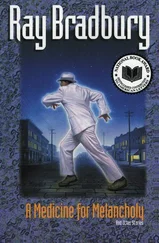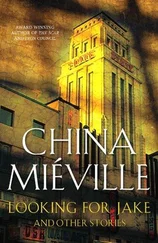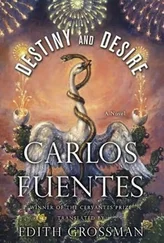In fact, all you had to do was close your eyes to imagine you were in the thick of a World War I battlefield: trenches, gas, bayonets that weren’t entirely imaginary; and all this beneath the summer rain that we should have been used to, God knows, it’s nothing new; but we acted as if it were: we can’t seem to give up on our toxic city’s promise of eternal spring — beneath a layer of industrial smoke and exhaust fumes; it’s another of our utopias. Even though we know that from May to September it’s going to rain hard all afternoon and a good part of the evening, we don’t carry umbrellas and we don’t wear raincoats. If the Virgin of Guadalupe could give us roses in December, perhaps one day her Son will give us summers without rain (without smog, without pollution).
Until then, this is a city of people (us included) who run through the rain with newspapers over their heads.
When he got to the door of the Lincoln, our teacher laughed and, more or less, put on his mackintosh — a Scottish architect with the same surname as the inventor of the raincoat, which could well be our professor’s ghost, a ghost that makes its appearance now with the peculiar sound of a black umbrella snapping open at a single touch: the umbrella is the ghost; it leaves with our teacher, whose giant strides carry him away from us, down Calle Revillagigedo, in the rain.
We were wet when we got to the center of the construction site on San Juan de Letrán, as we, traditionalists to the death, insisted on calling it.
The excavation had kept on growing until six or seven municipal projects converged on a point from which radiated, on one side, the tubes for a grand new subway station; on another, black bundles of telephone lines; a little farther, the earthquake-proof foundation of a twenty-story building that its owners wanted to save at all costs; and, nearby, the spot where we were going to put our rather Babylonian project, a garden, still completely imaginary, sunk in the mud, which was supposed to act as the “lungs of the city”—at least, that’s how it was euphemistically described.
We took the job at the urging of Professor Ferguson, who insisted that, come hell or high water, fine old buildings should be saved from the wrecking ball. They had told him that there were no such buildings there. Typically, he replied that that remained to be seen; behind a lunchstand, under a filling station, there could be a marvelous Neoclassical building from the eighteenth century, or a stairway to a forgotten colonial cemetery, who knows? It’s like Rome, Ferguson told the authorities. Mexico City has an almost geological layering of architectural styles.
Ferguson’s arguments won over the municipal bureaucracy (no doubt, they wanted to be rid of this tall, ungainly, and stubborn professor who came into the federal offices like a fjord cutting into the coastline: cold, violent, sure of his right to be there, and even more sure of the beauty of his rightness), and he even won over the two of us, his old disciples, when he also convinced the bureaucracy that we, the Vélez brothers, were the ideal architects for the project.
— But what are we supposed to do?
Our position (we consulted with each other) was none too clear.
— Someone has to preserve the historic buildings.
— But there aren’t any here.
— You two know as well as I do that these things can appear unexpectedly.
— But we need something more concrete to do.
— Think of our dignity, maestro. We have to keep up a front. People already think architects are a bunch of designing loafers.
He laughed and said that we hadn’t lost our student humor, adding that our job, officially, would be to create the garden, the green space — and that our contribution to the campaign against the urban emphysema wouldn’t be just hot air, certainly — but we would also be rescuing from bureaucratic and commercial pillory a vestige of the crystalline city Mexico used to be.
— And don’t tell me that neither you nor the gross municipal bureaucracy can find any building worth saving in this project; don’t give up the architect’s vision so easily, he said, furrowing his brow so his bald head looked like a white lake stirred up by a sudden storm, his head wrinkled from eyebrows to crown (quite a spectacle: we exchanged glances). That excuse won’t work, Professor Ferguson said seriously, quietly, because the architect must look at chaos — including a chaos that seems as irredeemable as this project — intently, as an artist would, and organize that chaos, knowing that if you can’t find the work of art in the midst of material confusion, the fault is yours, entirely yours, the architect’s, the artist’s.
— All architecture becomes distant; it occurred a thousand years ago, or will occur a thousand years from now. Ab ovum.
— But we are here today, we see the gray disorder of the everyday, and we don’t know how to see what has occurred and what will occur, without realizing — he opened his eyes and looked at us very seriously, without theatrics — that it is all occurring at all times.
He shook his head a little and looked at us, first at Carlos María, then at José María: us, the Vélez brothers.
— Okay, it’s all approximation, I’ve said it before, it’s nothing but approximation. But it’s the architect’s job, you know, to locate the space between the demands of the style and the response of the artist. We all want to consummate symbolic unions — for example, between change and the unchanging, or between the permitted and the prohibited. But another part of us wants to confront the product of these weddings with their probable divorce. I urge you, boys, my friends, to go out into the world denying what you yourselves do or see. Submit your vision to the negative that emerges from within yourselves. The perfect union of self and other, of reason and nature, is the most dangerous thing in the world. Art exists to keep desire alive, not to satisfy it. For example, if you could already see some likely architectural jewel in the middle of the mess in the construction zone, you would be identical with your desire, which is to conserve architecture. But since no one can see it, not you, not me, not anyone, at least so far, we are separated from our desire and therefore we are artists. And therefore we are sensual beings, searchers for the other. Or of the other …
He was silent for a while, and then he repeated: —Approximate, keep your eyes open, there is always a point in space where architecture organizes the sense of things, if only temporarily.
For the moment, however, the only thing we want is to set the scene for an experience that began that same August afternoon, in the rain, after we had brain quesadillas with Professor Ferguson, and to say here what we learned from the quesadilla wit of the cultivated architect. And isn’t that what Mexican architects are known for, since we are students, you know: we are the most elegant, the most handsome, the most sociable (professional deformation, virtue born of necessity, as you like), and surely the most cultivated.
Only a step separates us from the artist, the professor is right, but, unfortunately, another step, more inevitable, and we resemble a construction worker; and this afternoon, in the rain, stuck at the foot of the abyss that was the heart of all the muddy excavations in the center of the city, we noticed a tranquillity, an absence of the usual noises, which seemed supernatural. A group of engineers in white hard hats were talking to a group of workers in black hard hats. We got close to guessing the reason for the dispute; it wasn’t the first. They were always fighting about holidays. We had to observe the official holidays (the birthday of Juárez, the nationalization of petroleum), they wanted to observe the saints’ days (Maundy Thursday, the Cruz de Mayo — the masons’ feast day — the Ascension), and we were continually making a compromise between the two calendars, the civil and the religious, so as not to add to the infinite number of holidays, long weekends, and vacation time that kept paralyzing construction work in the city.
Читать дальше












